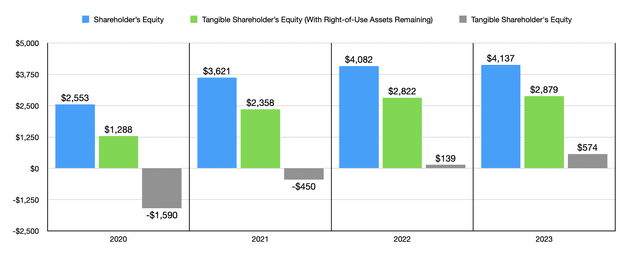Federal Government’s $3 Trillion+ Borrowings and Remaining Private Sector Deficit
March 12, 2024 | by stockcoin.net

In this article, the focus is on the Federal Government’s borrowing and the remaining deficit in the private sector. With the private sector in the US recording a surplus of $319 billion in February 2024, asset markets experienced growth, while $67 billion flowed out to foreign bank accounts. Despite short-term predictions of market decline, the rising fiscal impulse signals a positive outlook for 2024. Money movements within the US can offer insights into future investment trends and market performance. By analyzing the balance of different sectors in the economy over time, represented by the blue line in the chart, one can predict economic changes up to four quarters in advance. The continuing stock market melt-up defies predictions of decline. As the federal government’s borrowing surpasses $3 trillion, with $309 billion still remaining in the private sector as federal deficit, it is important to consider the impact of federal taxation events on the markets. Furthermore, the housing market is expected to reach its peak in 2026, with the rise in the price of lumber and home-builder ETFs. Strong macro-fiscal flows, coupled with low levels of private debt, provide indicators for potential investment opportunities. Understanding a country’s macro-fiscal flows and conducting sectoral flow analysis can yield valuable insights for making informed investment decisions. Additionally, countries with robust macro-fiscal flows and high private sector balances tend to experience asset price increases.

Private Sector Surplus in February 2024
In the month of February 2024, the private sector in the United States recorded an impressive surplus of $319 billion. This surplus has had a significant impact on the growth of asset markets throughout the country. With such a substantial surplus, it is clear that the private sector is experiencing a period of financial strength and stability.
Federal Government’s Injection into the Private Sector
To further support and stimulate the private sector, the federal government injected a total of $309 billion. This injection of funds aimed to provide additional liquidity and enable businesses to thrive. However, it is worth noting that $67 billion of this amount flowed out to foreign bank accounts. While this outflow to foreign accounts is worth investigating, it should not overshadow the positive impact of the government’s injection.

Positive Outlook for 2024
Despite short-term predictions of market decline, there is an overall positive outlook for the year 2024. This positive sentiment is supported by the rising fiscal impulse, which suggests an increase in government spending and investment. While it is essential to consider short-term fluctuations, the long-term outlook remains optimistic, indicating stability and growth for the economy.
Money Movements as Indicators
Money movements within the United States provide valuable insights into future investment trends and market performance. Tracking the flow of capital can help identify areas of growth and potential investment opportunities. These indicators can be crucial tools for investors and financial analysts, enabling them to make informed decisions based on market dynamics and monetary flows.

Balance of Different Sectors in the Economy
Understanding the balance of various sectors in the economy is essential for gauging overall economic health. Over time, this balance undergoes changes influenced by a range of factors such as government policies, market conditions, and technological advancements. Analyzing these changes allows economists and policymakers to assess the resilience of different sectors and make informed decisions to support sustainable economic growth.
Government Spending and Credit Creation
Government spending and credit creation play a crucial role in shaping the economy. By tracking these factors, economists gain insights into future economic changes. The chart illustrates the blue line, representing the money that the government spends and the credit that banks create. When combined with the current account balance, this line enables predictions of economic changes up to four quarters in advance. This information is invaluable for policymakers and investors seeking to understand and adapt to economic trends.

Continued Stock Market Melt-Up
Contrary to predictions of decline, the stock market has continued to experience a melt-up. This phenomenon refers to a sustained period of positive market performance, defying expectations of a downturn. Despite the inherent volatility of financial markets, the ongoing rally in the stock market reflects a positive sentiment among investors and suggests optimism about the economy’s future prospects.
Federal Government’s Borrowings
In its efforts to support the economy and fund various initiatives, the federal government has borrowed a staggering total of over $3 trillion. While this borrowing can raise concerns about the growing national debt, it is important to consider that a significant portion has been injected into the private sector, stimulating economic activity. Currently, $309 billion remains as the federal deficit, indicating the government’s ongoing commitment to supporting the private sector.

Negative Impact of Federal Taxation Events
Federal taxation events can have a significant impact on the markets. Changes in tax policies and rates can influence investor sentiment and market dynamics. In particular, higher taxes may lead to reduced corporate profits and lower investor returns, prompting market reactions such as reduced investment and stock price declines. It is crucial for investors and policymakers to monitor and evaluate the potential market impact of taxation events.
Impact of Macro-Fiscal Flows on Asset Prices
The macro-fiscal flows within a country have a direct impact on asset prices. Countries with strong macro-fiscal flows and high private sector balances tend to experience rising asset prices. This relationship underscores the importance of analyzing macro-fiscal flows and sectoral flow analysis when making investment decisions. Understanding these flows provides insights into the overall economic health and potential investment opportunities within a country or region.
In conclusion, the private sector surplus in February 2024, amounting to $319 billion, has led to significant growth in asset markets. The federal government’s injection of $309 billion further supports the private sector, despite $67 billion flowing out to foreign bank accounts. Despite short-term predictions of market decline, there is a positive outlook for 2024, driven by the rising fiscal impulse. Money movements serve as indicators for future investment trends and market performance. The balance of different sectors in the economy undergoes changes over time, which can be analyzed using charts. The government’s spending and credit creation, as represented by the blue line on the chart, can predict future economic changes. The continued stock market melt-up defies predictions of decline and showcases positive market performance. The federal government’s borrowings, totaling over $3 trillion, with $309 billion remaining as the federal deficit, illustrate its commitment to supporting the private sector. Federal taxation events have a negative impact on the markets, while strong macro-fiscal flows and high private sector balances drive asset prices. By understanding and analyzing these factors, investors and policymakers can make informed decisions to navigate the dynamic economic landscape.

RELATED POSTS
View all





